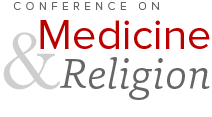Touching the Spirit: Re-enchanting the Person in the Body
Peggy Determeyer, PhD., McGee Fellow on Bioethics and Aging, The Hope and Healing Center and Institute
Julie Kutac, PhD., Professional Education and Research Specialist, Alzheimer's Association - Houston & Southeast Texas Chapter
Medicine’s emergence as a profession and not just a dark art used the senses to understand the workings of the human body. In touching the body, the practitioner engages in a form of closeness necessitating interaction between two people. With the intervention of scientific discovery, the enchantment of the body is no longer present: machines can now “see” the inner workings of the body, and touch has been relegated to a lesser skill. In a recent TED talk, Dr. Susan Cooley spoke of the absence of touch as her body was ravaged by infection, with medical personnel focusing on the monitors that flashed performance indicators. She lamented that her practitioners looked at the machines more than her face and that they listened to the beeps of the machines more than her human cries. Yes, these practitioners were doing their jobs, but Dr. Cooley decried the gap between the machines that signify the medical complex and the humans who are connected to them. In this strange world where machine and body meet the undisciplined body is rejected in favor of the technical.
Perhaps touch might be unimportant if persons were only their bodies. In this paper, we argue that the person, made up of flesh but not reducible to it alone, is the central foundation to the re-enchantment of medicine. The person should be the practitioner’s focus, whether as patient or as family surrogate for those who no longer speak for themselves. Modern diagnostic tools are important, but they cannot be supplanted by the senses, particularly touch, in which the practitioner engages in a form of closeness necessitating interaction between two persons. Though skin separates two humans from one another, each can perceive the other’s humanity through interaction among the senses.
With human engagement taking a backseat to the technical, it is no wonder that ordinary people are disenchanted with modern American medicine. Dr. Cooley’s sad but prescient observations expose forces that continually threaten the practice of medicine today. As the progress of scientific discovery moves ever forward, the body’s mysteries become reconfigured as problems to be solved. The enigmatic inner workings of the body become ignored as those aspects of the body that can be quantified are measured and ultimately controlled.
Though those in medicine might like to bracket the spirit or the soul from its purview, to speak of persons requires that we consider those qualities that spark within each human and make them more than just meat and bones. The machinations of the soul--that ineffable aspect of humanity-- cannot be quantified, but still erupt in the presence of radical ambiguity, vulnerability, and ultimate mortality. Only by returning to the senses can practitioners resist the dehumanizing effects of machinery and re-enchant the persons they have sworn to serve.
Julie Kutac, PhD., Professional Education and Research Specialist, Alzheimer's Association - Houston & Southeast Texas Chapter
Medicine’s emergence as a profession and not just a dark art used the senses to understand the workings of the human body. In touching the body, the practitioner engages in a form of closeness necessitating interaction between two people. With the intervention of scientific discovery, the enchantment of the body is no longer present: machines can now “see” the inner workings of the body, and touch has been relegated to a lesser skill. In a recent TED talk, Dr. Susan Cooley spoke of the absence of touch as her body was ravaged by infection, with medical personnel focusing on the monitors that flashed performance indicators. She lamented that her practitioners looked at the machines more than her face and that they listened to the beeps of the machines more than her human cries. Yes, these practitioners were doing their jobs, but Dr. Cooley decried the gap between the machines that signify the medical complex and the humans who are connected to them. In this strange world where machine and body meet the undisciplined body is rejected in favor of the technical.
Perhaps touch might be unimportant if persons were only their bodies. In this paper, we argue that the person, made up of flesh but not reducible to it alone, is the central foundation to the re-enchantment of medicine. The person should be the practitioner’s focus, whether as patient or as family surrogate for those who no longer speak for themselves. Modern diagnostic tools are important, but they cannot be supplanted by the senses, particularly touch, in which the practitioner engages in a form of closeness necessitating interaction between two persons. Though skin separates two humans from one another, each can perceive the other’s humanity through interaction among the senses.
With human engagement taking a backseat to the technical, it is no wonder that ordinary people are disenchanted with modern American medicine. Dr. Cooley’s sad but prescient observations expose forces that continually threaten the practice of medicine today. As the progress of scientific discovery moves ever forward, the body’s mysteries become reconfigured as problems to be solved. The enigmatic inner workings of the body become ignored as those aspects of the body that can be quantified are measured and ultimately controlled.
Though those in medicine might like to bracket the spirit or the soul from its purview, to speak of persons requires that we consider those qualities that spark within each human and make them more than just meat and bones. The machinations of the soul--that ineffable aspect of humanity-- cannot be quantified, but still erupt in the presence of radical ambiguity, vulnerability, and ultimate mortality. Only by returning to the senses can practitioners resist the dehumanizing effects of machinery and re-enchant the persons they have sworn to serve.
